Marketing Strategy Of Wesfarmers Limited
VerifiedAdded on 2021/06/17
|17
|1237
|206
Presentation
AI Summary
Contribute Materials
Your contribution can guide someone’s learning journey. Share your
documents today.
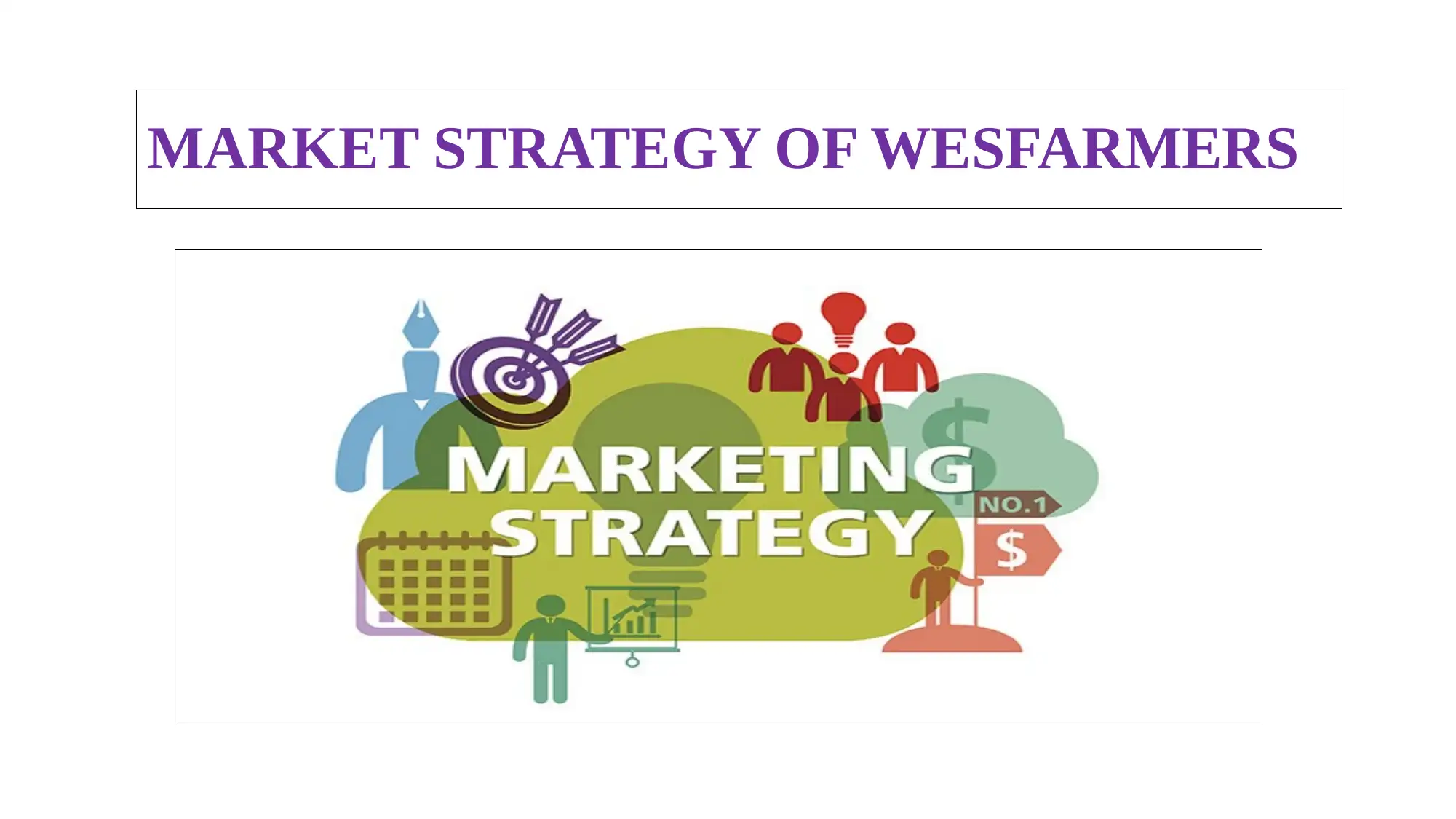
MARKET STRATEGY OF WESFARMERS
Secure Best Marks with AI Grader
Need help grading? Try our AI Grader for instant feedback on your assignments.
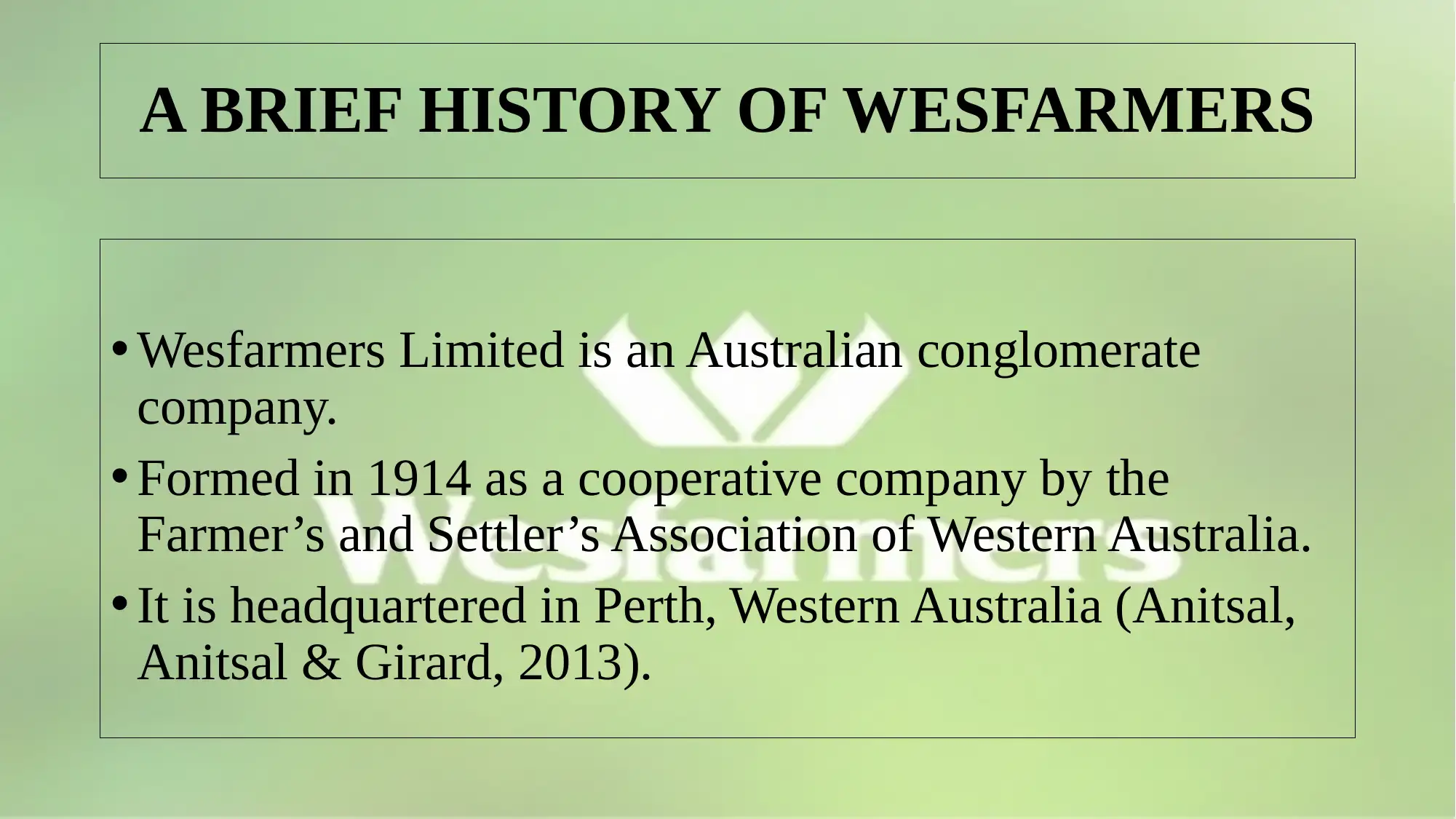
A BRIEF HISTORY OF WESFARMERS
• Wesfarmers Limited is an Australian conglomerate
company.
• Formed in 1914 as a cooperative company by the
Farmer’s and Settler’s Association of Western Australia.
• It is headquartered in Perth, Western Australia (Anitsal,
Anitsal & Girard, 2013).
• Wesfarmers Limited is an Australian conglomerate
company.
• Formed in 1914 as a cooperative company by the
Farmer’s and Settler’s Association of Western Australia.
• It is headquartered in Perth, Western Australia (Anitsal,
Anitsal & Girard, 2013).

MISSION OF THE COMPANY
•Deliver satisfactory returns to the
shareholders
•Ensures that each of the divisions has a
strong management capability
(Wesfarmers.com.au, 2018)
•Deliver satisfactory returns to the
shareholders
•Ensures that each of the divisions has a
strong management capability
(Wesfarmers.com.au, 2018)
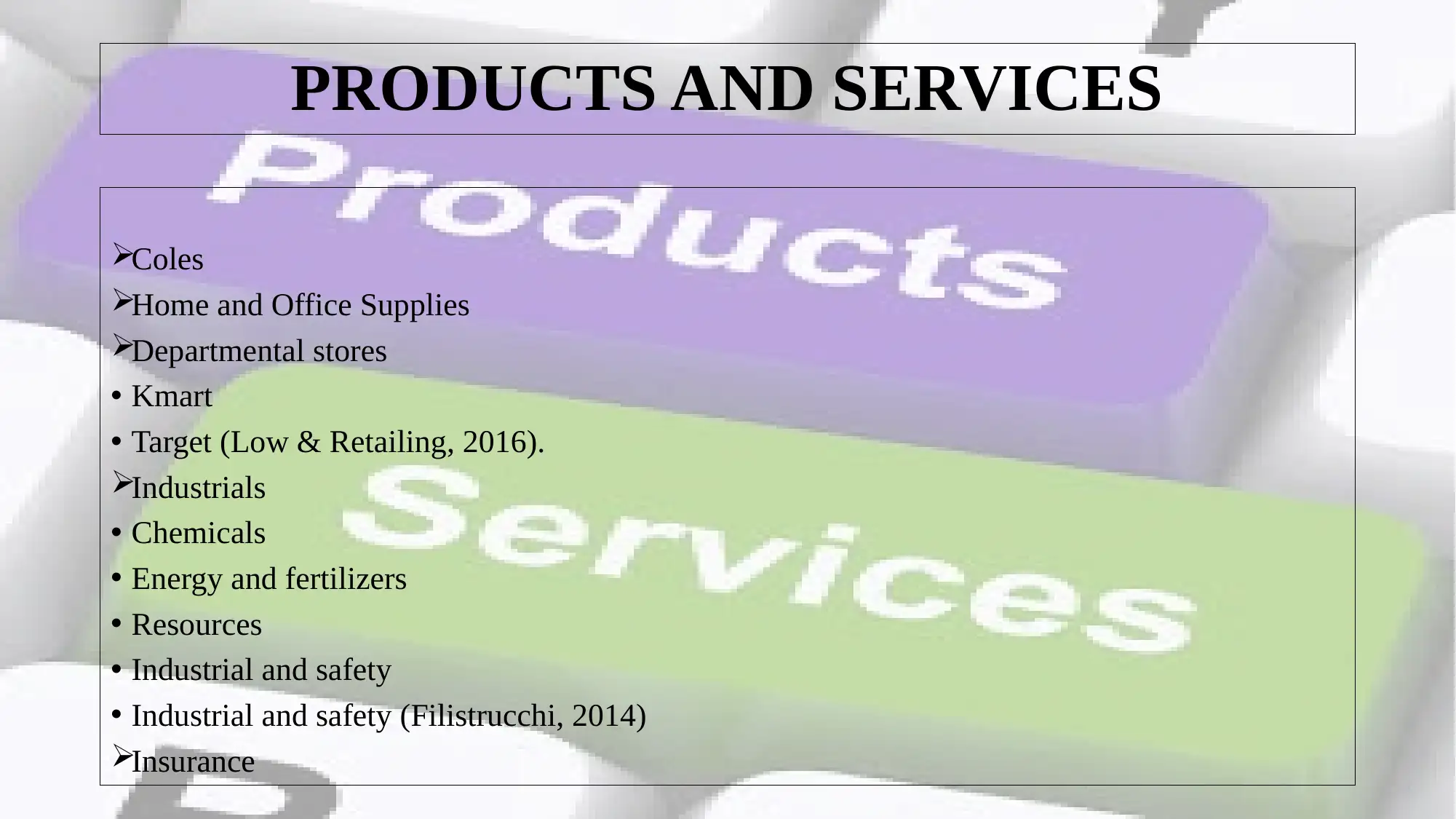
PRODUCTS AND SERVICES
Coles
Home and Office Supplies
Departmental stores
• Kmart
• Target (Low & Retailing, 2016).
Industrials
• Chemicals
• Energy and fertilizers
• Resources
• Industrial and safety
• Industrial and safety (Filistrucchi, 2014)
Insurance
Coles
Home and Office Supplies
Departmental stores
• Kmart
• Target (Low & Retailing, 2016).
Industrials
• Chemicals
• Energy and fertilizers
• Resources
• Industrial and safety
• Industrial and safety (Filistrucchi, 2014)
Insurance
Secure Best Marks with AI Grader
Need help grading? Try our AI Grader for instant feedback on your assignments.

DEFINING MARKETING MIX
•Set of actions and certain tactics
• Used by a company to promote its brand or product in the market
• Referred to as the 4Ps
• Include Pricing, Product, Promotion and Place
•Set of actions and certain tactics
• Used by a company to promote its brand or product in the market
• Referred to as the 4Ps
• Include Pricing, Product, Promotion and Place
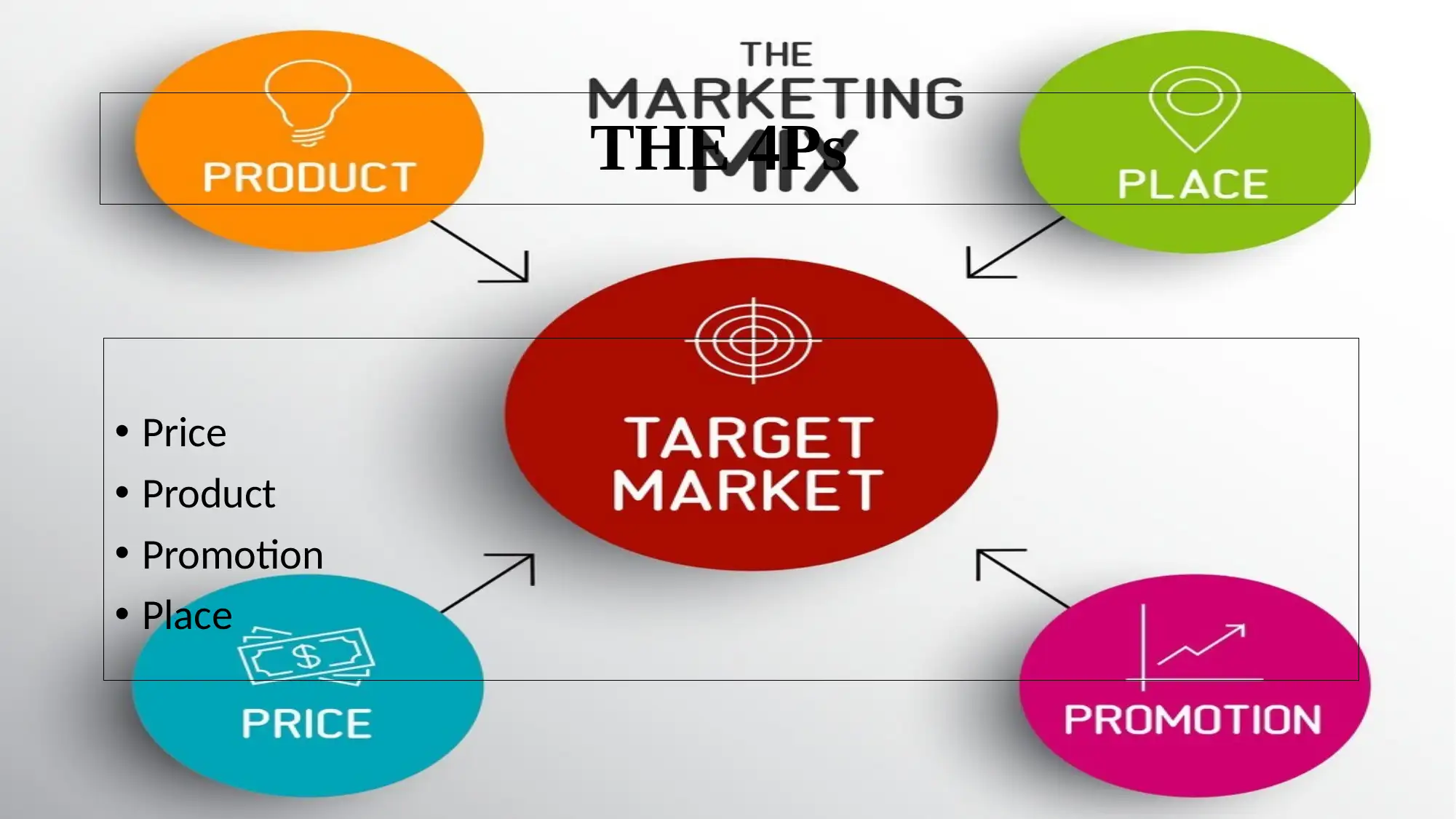
THE 4Ps
• Price
• Product
• Promotion
• Place
• Price
• Product
• Promotion
• Place
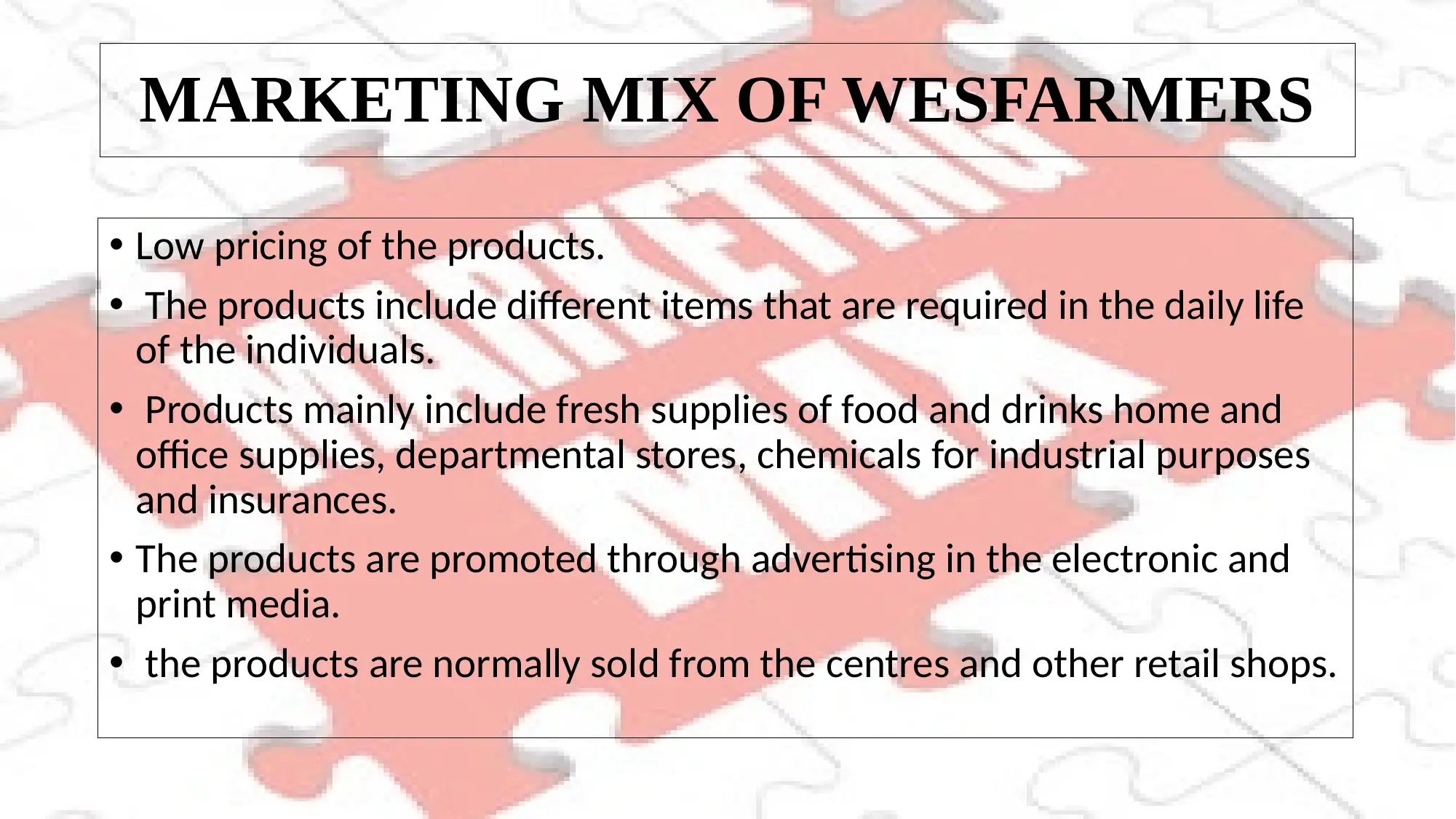
MARKETING MIX OF WESFARMERS
• Low pricing of the products.
• The products include different items that are required in the daily life
of the individuals.
• Products mainly include fresh supplies of food and drinks home and
office supplies, departmental stores, chemicals for industrial purposes
and insurances.
• The products are promoted through advertising in the electronic and
print media.
• the products are normally sold from the centres and other retail shops.
• Low pricing of the products.
• The products include different items that are required in the daily life
of the individuals.
• Products mainly include fresh supplies of food and drinks home and
office supplies, departmental stores, chemicals for industrial purposes
and insurances.
• The products are promoted through advertising in the electronic and
print media.
• the products are normally sold from the centres and other retail shops.
Paraphrase This Document
Need a fresh take? Get an instant paraphrase of this document with our AI Paraphraser
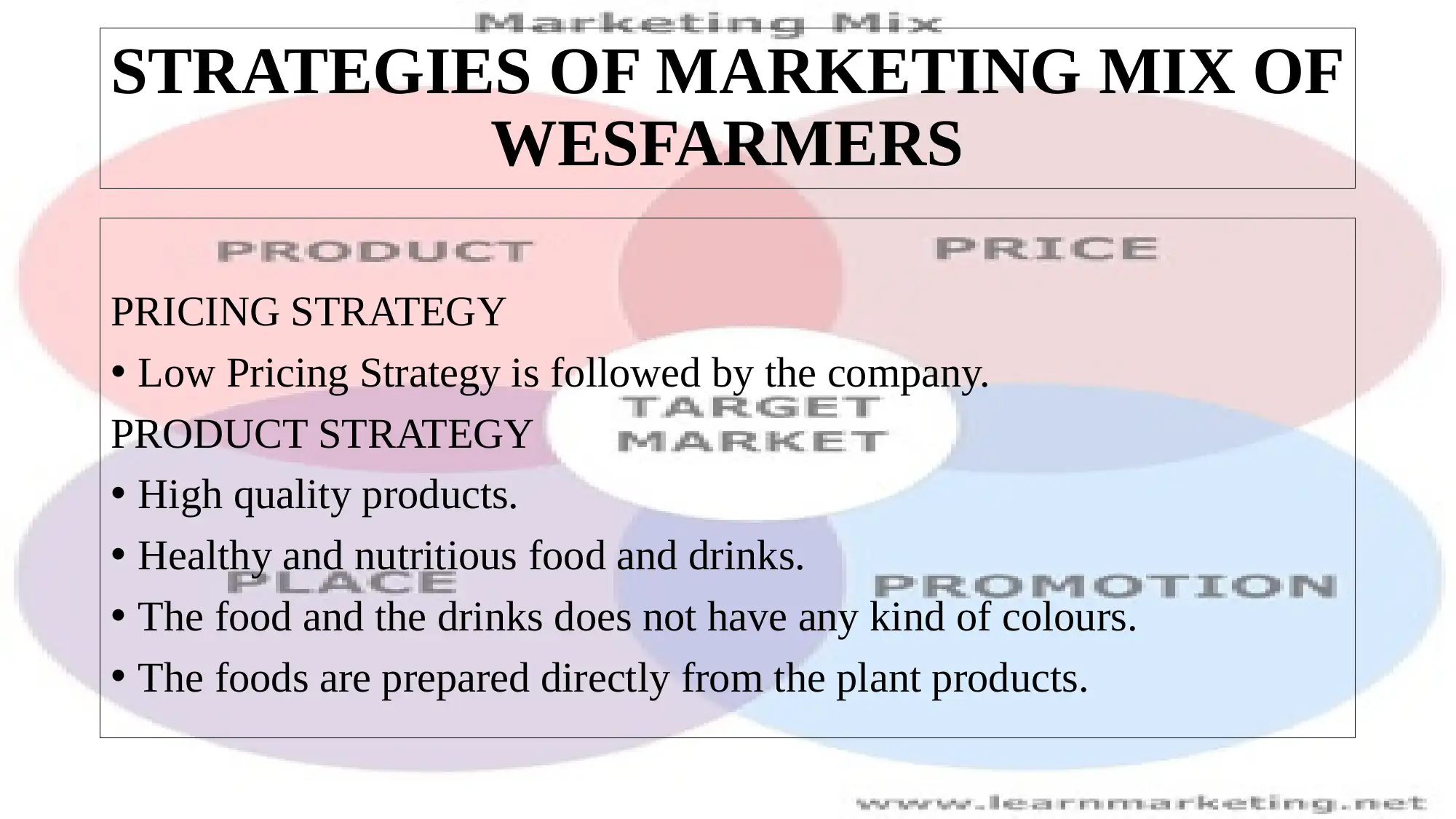
STRATEGIES OF MARKETING MIX OF
WESFARMERS
PRICING STRATEGY
• Low Pricing Strategy is followed by the company.
PRODUCT STRATEGY
• High quality products.
• Healthy and nutritious food and drinks.
• The food and the drinks does not have any kind of colours.
• The foods are prepared directly from the plant products.
WESFARMERS
PRICING STRATEGY
• Low Pricing Strategy is followed by the company.
PRODUCT STRATEGY
• High quality products.
• Healthy and nutritious food and drinks.
• The food and the drinks does not have any kind of colours.
• The foods are prepared directly from the plant products.
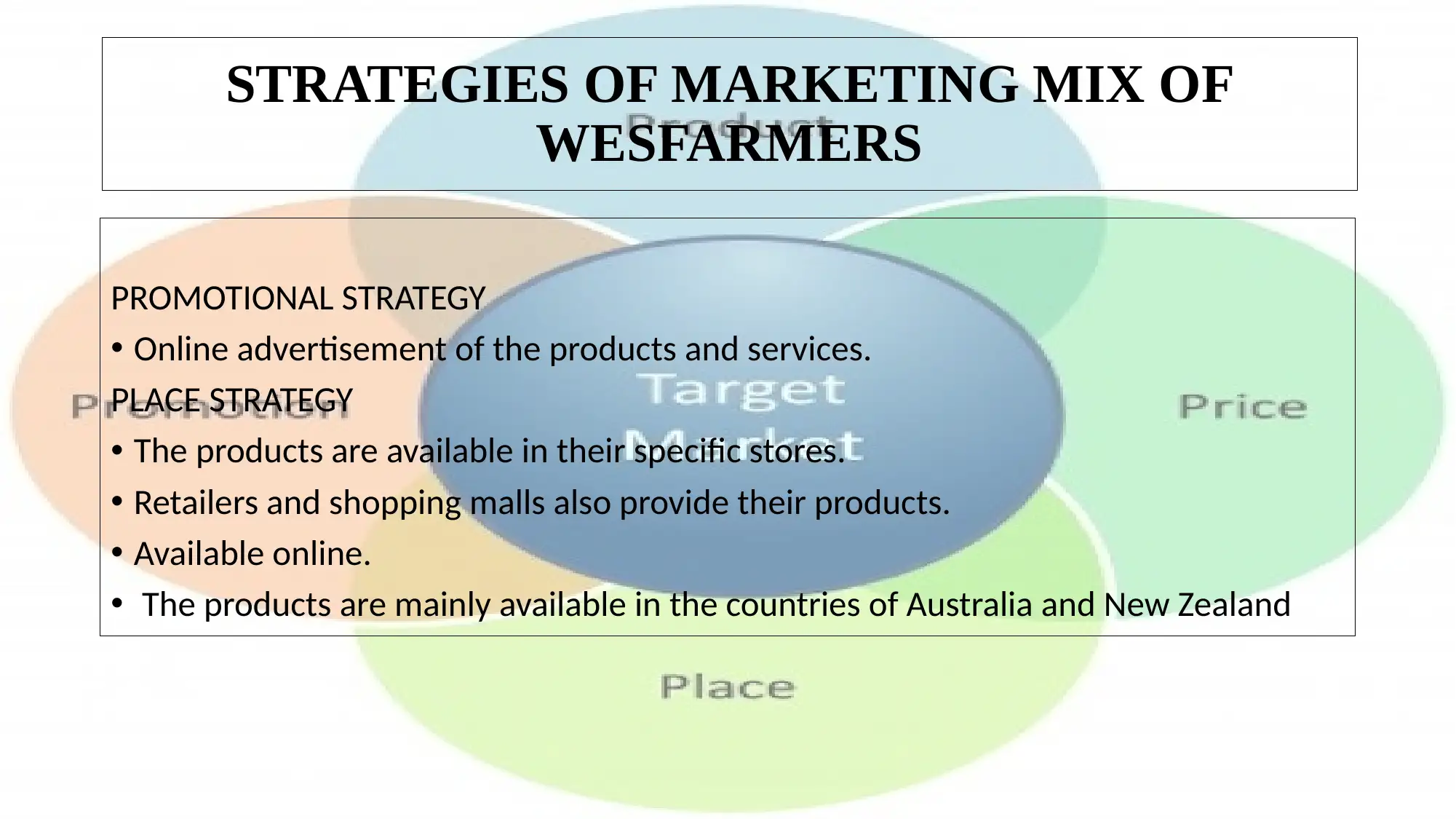
STRATEGIES OF MARKETING MIX OF
WESFARMERS
PROMOTIONAL STRATEGY
• Online advertisement of the products and services.
PLACE STRATEGY
• The products are available in their specific stores.
• Retailers and shopping malls also provide their products.
• Available online.
• The products are mainly available in the countries of Australia and New Zealand
WESFARMERS
PROMOTIONAL STRATEGY
• Online advertisement of the products and services.
PLACE STRATEGY
• The products are available in their specific stores.
• Retailers and shopping malls also provide their products.
• Available online.
• The products are mainly available in the countries of Australia and New Zealand
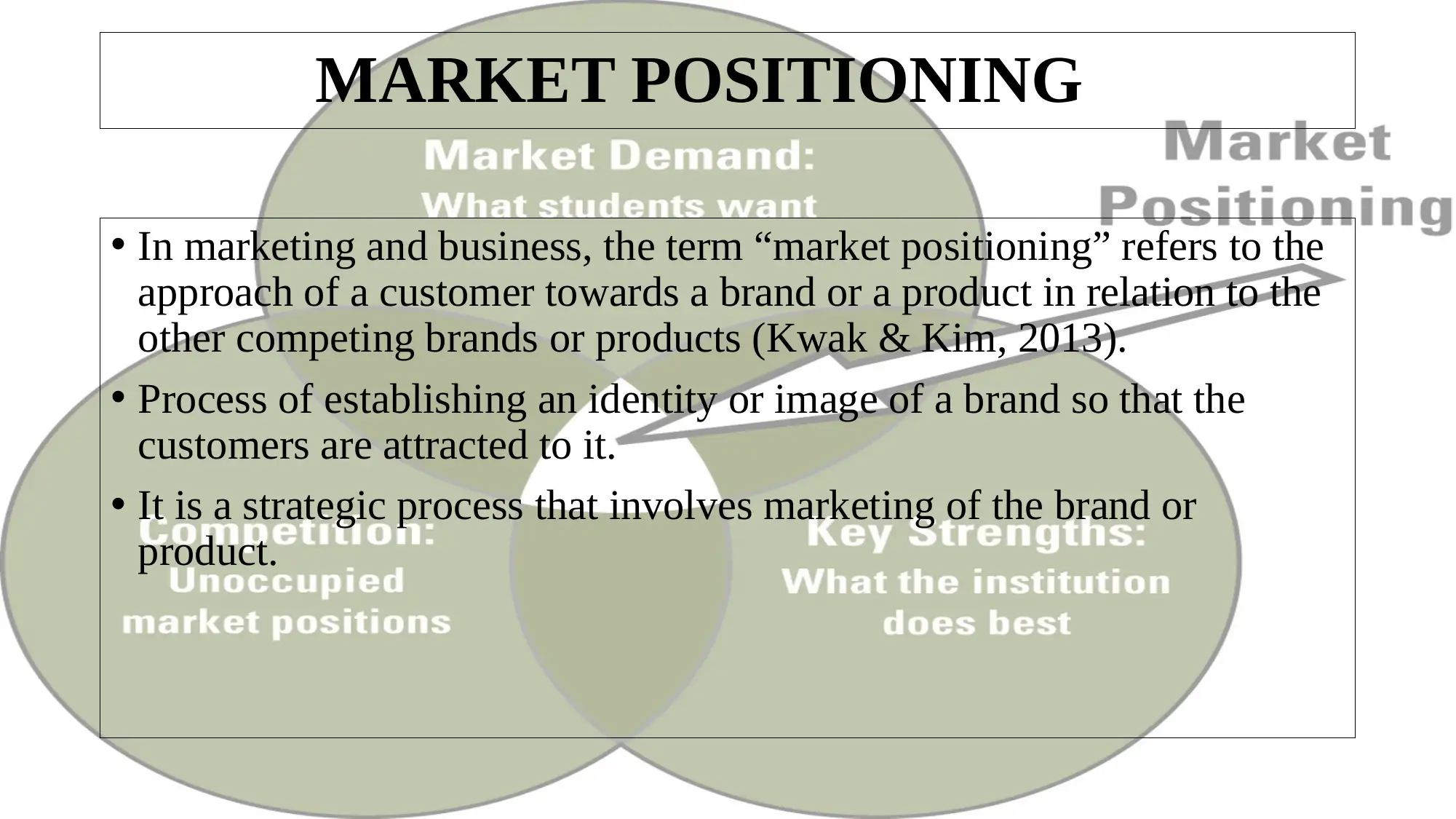
MARKET POSITIONING
• In marketing and business, the term “market positioning” refers to the
approach of a customer towards a brand or a product in relation to the
other competing brands or products (Kwak & Kim, 2013).
• Process of establishing an identity or image of a brand so that the
customers are attracted to it.
• It is a strategic process that involves marketing of the brand or
product.
• In marketing and business, the term “market positioning” refers to the
approach of a customer towards a brand or a product in relation to the
other competing brands or products (Kwak & Kim, 2013).
• Process of establishing an identity or image of a brand so that the
customers are attracted to it.
• It is a strategic process that involves marketing of the brand or
product.
Secure Best Marks with AI Grader
Need help grading? Try our AI Grader for instant feedback on your assignments.
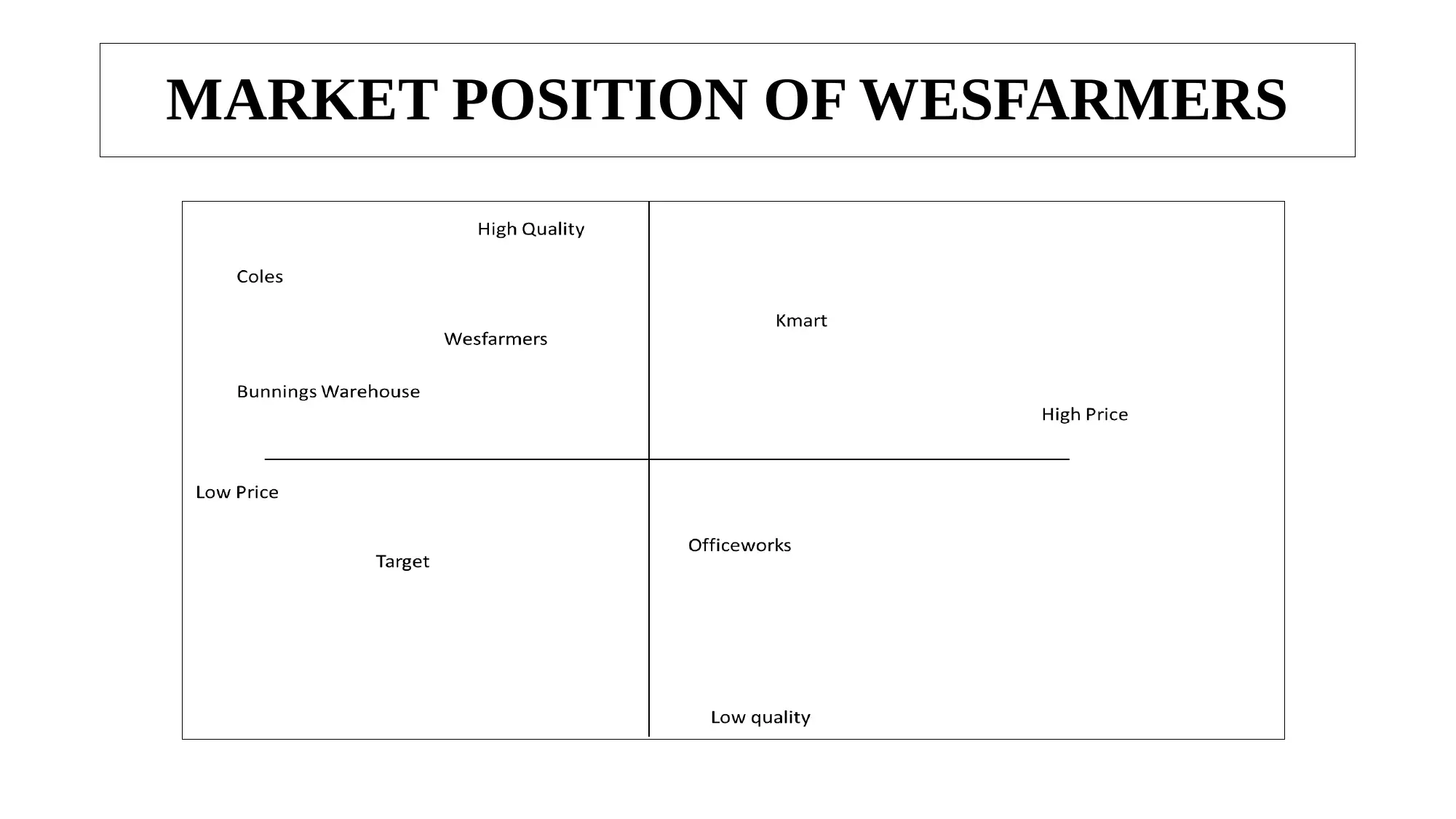
MARKET POSITION OF WESFARMERS
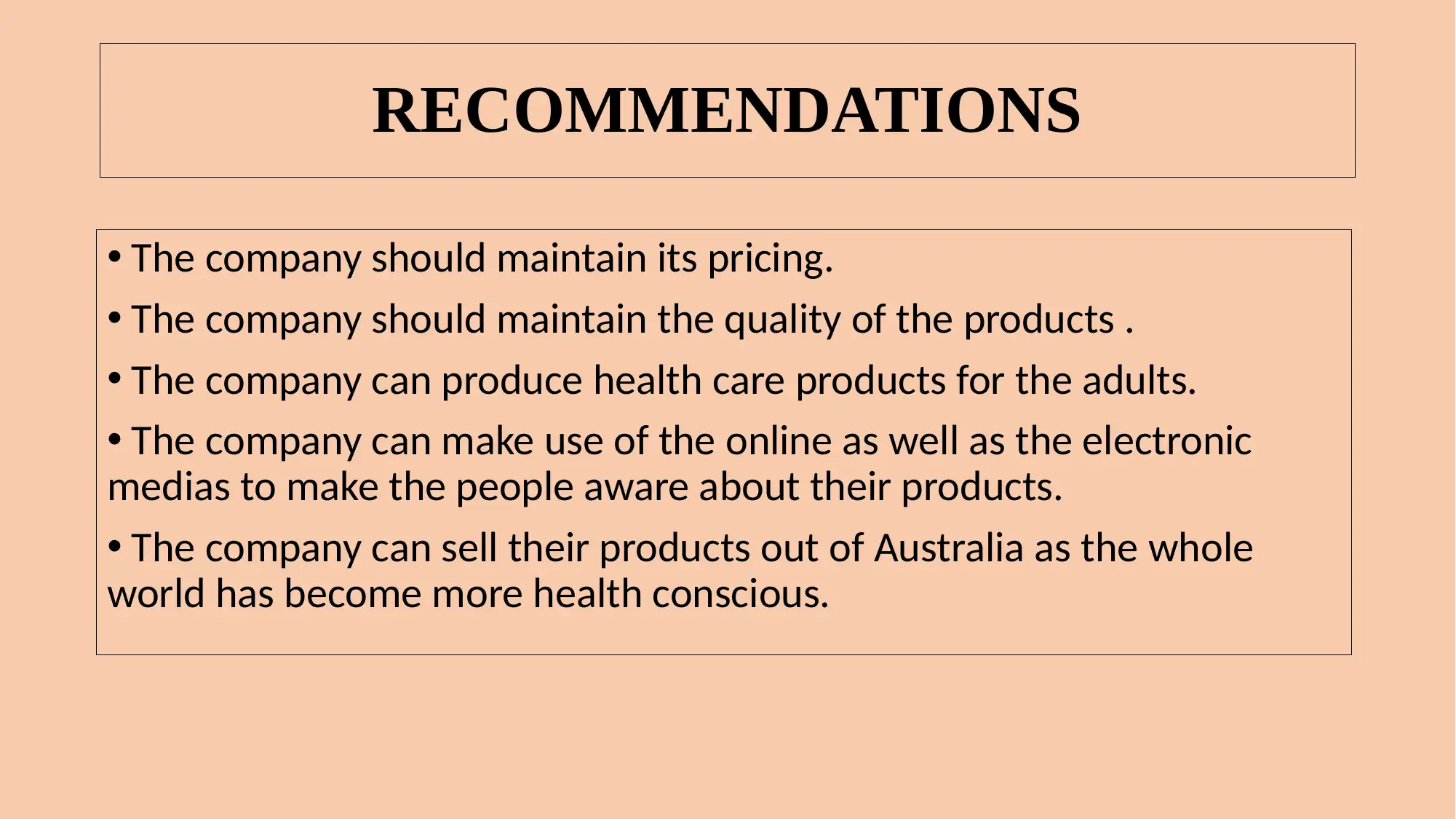
RECOMMENDATIONS
• The company should maintain its pricing.
• The company should maintain the quality of the products .
• The company can produce health care products for the adults.
• The company can make use of the online as well as the electronic
medias to make the people aware about their products.
• The company can sell their products out of Australia as the whole
world has become more health conscious.
• The company should maintain its pricing.
• The company should maintain the quality of the products .
• The company can produce health care products for the adults.
• The company can make use of the online as well as the electronic
medias to make the people aware about their products.
• The company can sell their products out of Australia as the whole
world has become more health conscious.
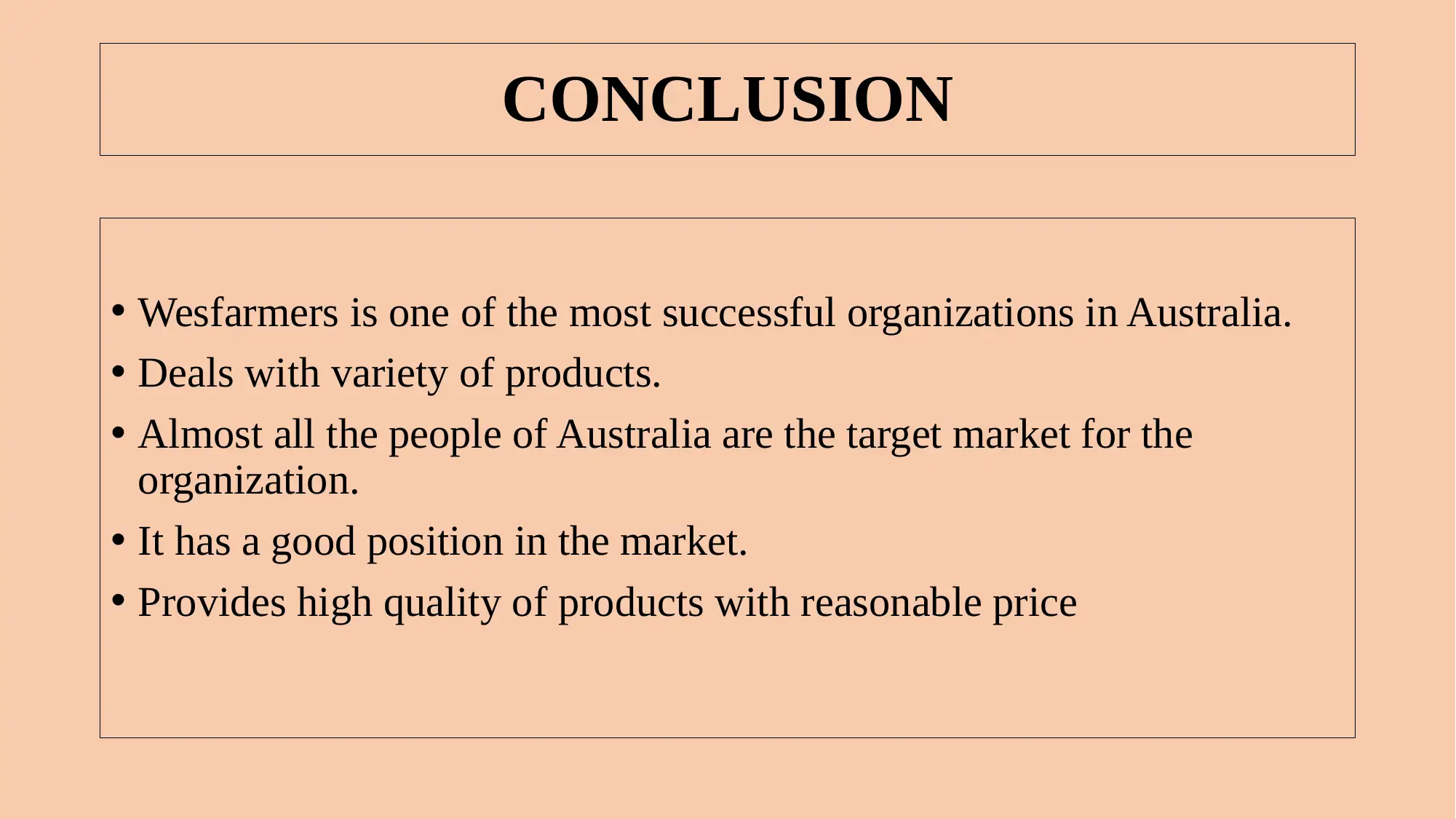
CONCLUSION
• Wesfarmers is one of the most successful organizations in Australia.
• Deals with variety of products.
• Almost all the people of Australia are the target market for the
organization.
• It has a good position in the market.
• Provides high quality of products with reasonable price
• Wesfarmers is one of the most successful organizations in Australia.
• Deals with variety of products.
• Almost all the people of Australia are the target market for the
organization.
• It has a good position in the market.
• Provides high quality of products with reasonable price
Paraphrase This Document
Need a fresh take? Get an instant paraphrase of this document with our AI Paraphraser
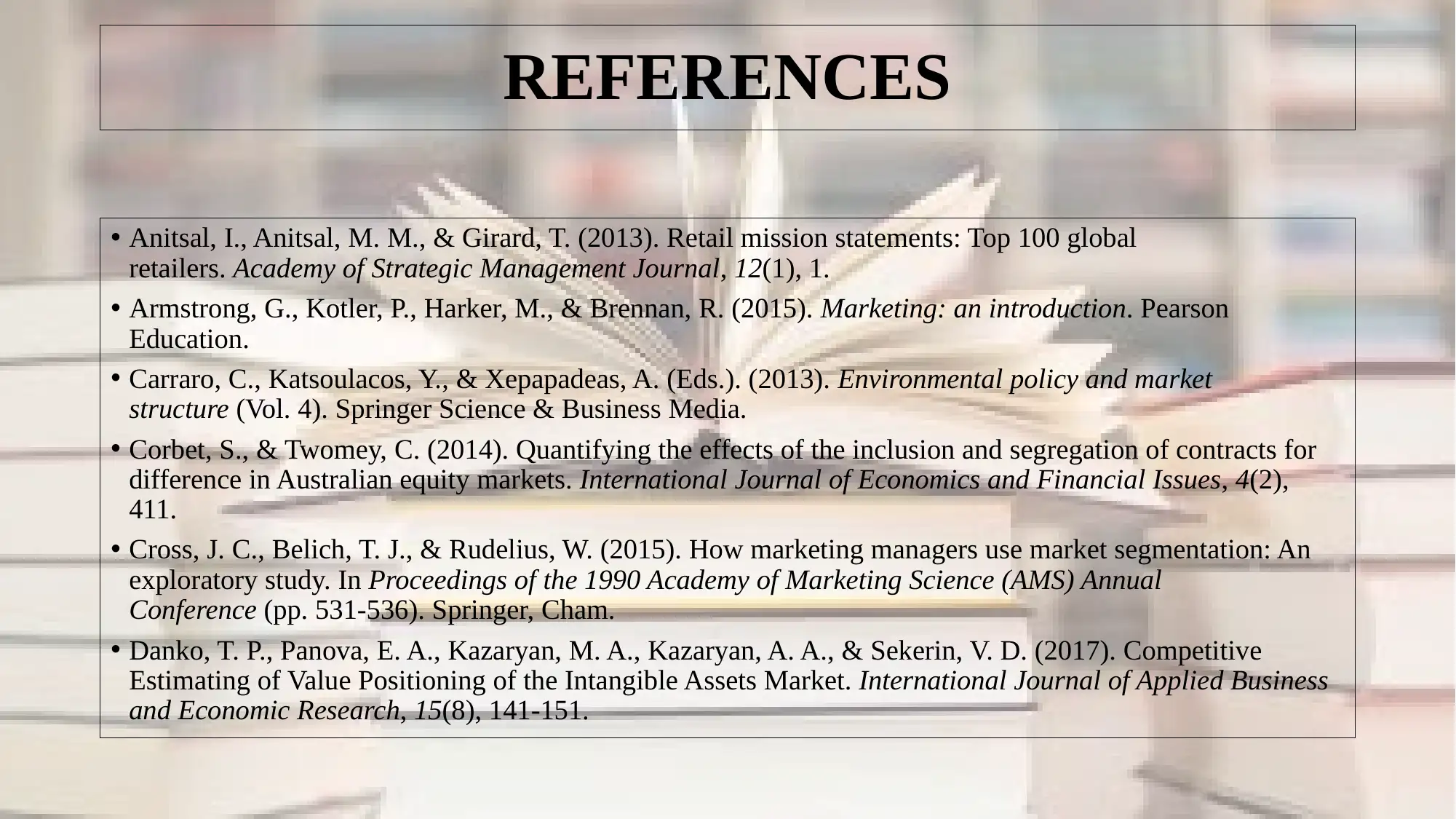
REFERENCES
• Anitsal, I., Anitsal, M. M., & Girard, T. (2013). Retail mission statements: Top 100 global
retailers. Academy of Strategic Management Journal, 12(1), 1.
• Armstrong, G., Kotler, P., Harker, M., & Brennan, R. (2015). Marketing: an introduction. Pearson
Education.
• Carraro, C., Katsoulacos, Y., & Xepapadeas, A. (Eds.). (2013). Environmental policy and market
structure (Vol. 4). Springer Science & Business Media.
• Corbet, S., & Twomey, C. (2014). Quantifying the effects of the inclusion and segregation of contracts for
difference in Australian equity markets. International Journal of Economics and Financial Issues, 4(2),
411.
• Cross, J. C., Belich, T. J., & Rudelius, W. (2015). How marketing managers use market segmentation: An
exploratory study. In Proceedings of the 1990 Academy of Marketing Science (AMS) Annual
Conference (pp. 531-536). Springer, Cham.
• Danko, T. P., Panova, E. A., Kazaryan, M. A., Kazaryan, A. A., & Sekerin, V. D. (2017). Competitive
Estimating of Value Positioning of the Intangible Assets Market. International Journal of Applied Business
and Economic Research, 15(8), 141-151.
• Anitsal, I., Anitsal, M. M., & Girard, T. (2013). Retail mission statements: Top 100 global
retailers. Academy of Strategic Management Journal, 12(1), 1.
• Armstrong, G., Kotler, P., Harker, M., & Brennan, R. (2015). Marketing: an introduction. Pearson
Education.
• Carraro, C., Katsoulacos, Y., & Xepapadeas, A. (Eds.). (2013). Environmental policy and market
structure (Vol. 4). Springer Science & Business Media.
• Corbet, S., & Twomey, C. (2014). Quantifying the effects of the inclusion and segregation of contracts for
difference in Australian equity markets. International Journal of Economics and Financial Issues, 4(2),
411.
• Cross, J. C., Belich, T. J., & Rudelius, W. (2015). How marketing managers use market segmentation: An
exploratory study. In Proceedings of the 1990 Academy of Marketing Science (AMS) Annual
Conference (pp. 531-536). Springer, Cham.
• Danko, T. P., Panova, E. A., Kazaryan, M. A., Kazaryan, A. A., & Sekerin, V. D. (2017). Competitive
Estimating of Value Positioning of the Intangible Assets Market. International Journal of Applied Business
and Economic Research, 15(8), 141-151.
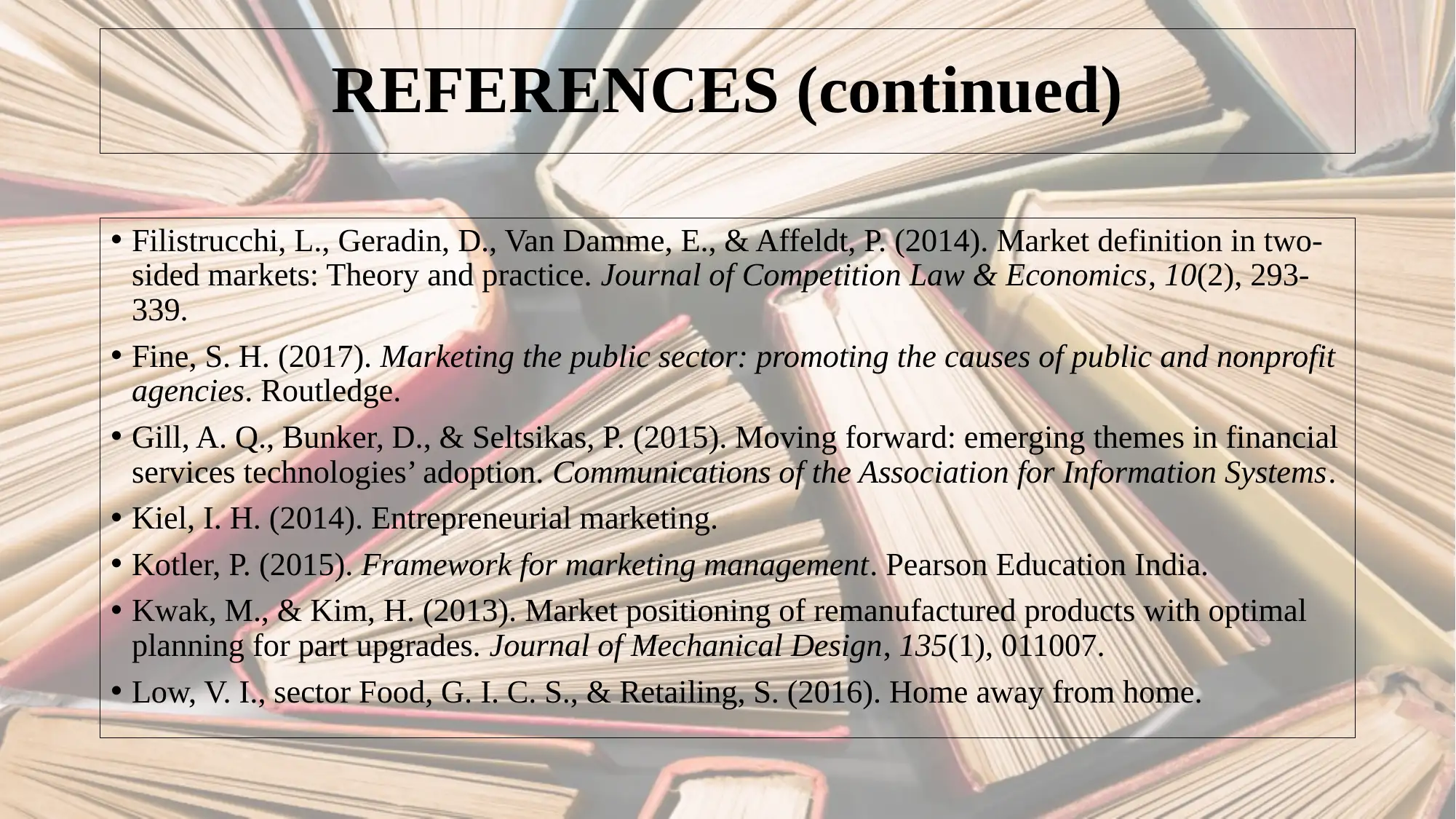
REFERENCES (continued)
• Filistrucchi, L., Geradin, D., Van Damme, E., & Affeldt, P. (2014). Market definition in two-
sided markets: Theory and practice. Journal of Competition Law & Economics, 10(2), 293-
339.
• Fine, S. H. (2017). Marketing the public sector: promoting the causes of public and nonprofit
agencies. Routledge.
• Gill, A. Q., Bunker, D., & Seltsikas, P. (2015). Moving forward: emerging themes in financial
services technologies’ adoption. Communications of the Association for Information Systems.
• Kiel, I. H. (2014). Entrepreneurial marketing.
• Kotler, P. (2015). Framework for marketing management. Pearson Education India.
• Kwak, M., & Kim, H. (2013). Market positioning of remanufactured products with optimal
planning for part upgrades. Journal of Mechanical Design, 135(1), 011007.
• Low, V. I., sector Food, G. I. C. S., & Retailing, S. (2016). Home away from home.
• Filistrucchi, L., Geradin, D., Van Damme, E., & Affeldt, P. (2014). Market definition in two-
sided markets: Theory and practice. Journal of Competition Law & Economics, 10(2), 293-
339.
• Fine, S. H. (2017). Marketing the public sector: promoting the causes of public and nonprofit
agencies. Routledge.
• Gill, A. Q., Bunker, D., & Seltsikas, P. (2015). Moving forward: emerging themes in financial
services technologies’ adoption. Communications of the Association for Information Systems.
• Kiel, I. H. (2014). Entrepreneurial marketing.
• Kotler, P. (2015). Framework for marketing management. Pearson Education India.
• Kwak, M., & Kim, H. (2013). Market positioning of remanufactured products with optimal
planning for part upgrades. Journal of Mechanical Design, 135(1), 011007.
• Low, V. I., sector Food, G. I. C. S., & Retailing, S. (2016). Home away from home.
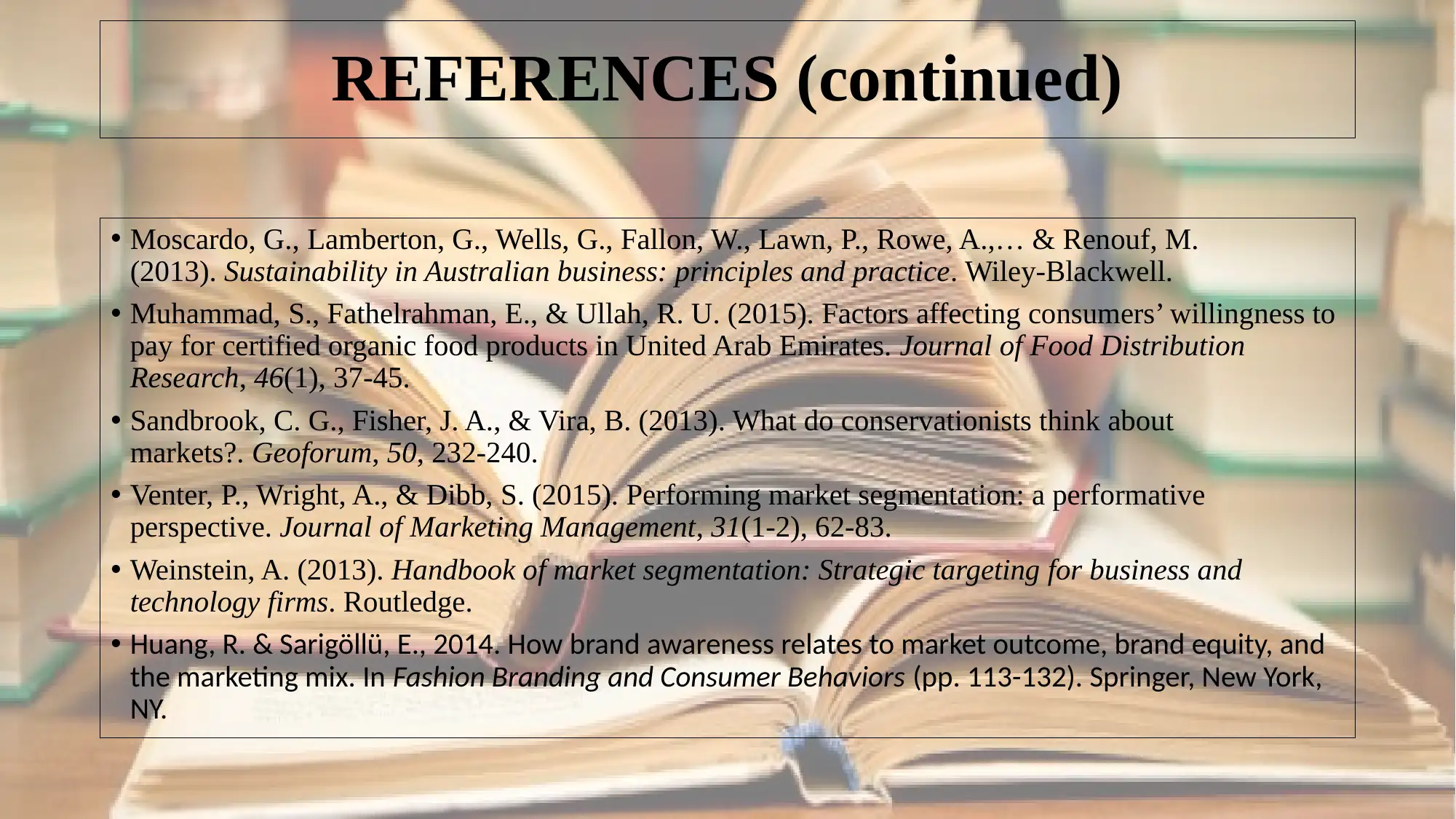
REFERENCES (continued)
• Moscardo, G., Lamberton, G., Wells, G., Fallon, W., Lawn, P., Rowe, A.,… & Renouf, M.
(2013). Sustainability in Australian business: principles and practice. Wiley-Blackwell.
• Muhammad, S., Fathelrahman, E., & Ullah, R. U. (2015). Factors affecting consumers’ willingness to
pay for certified organic food products in United Arab Emirates. Journal of Food Distribution
Research, 46(1), 37-45.
• Sandbrook, C. G., Fisher, J. A., & Vira, B. (2013). What do conservationists think about
markets?. Geoforum, 50, 232-240.
• Venter, P., Wright, A., & Dibb, S. (2015). Performing market segmentation: a performative
perspective. Journal of Marketing Management, 31(1-2), 62-83.
• Weinstein, A. (2013). Handbook of market segmentation: Strategic targeting for business and
technology firms. Routledge.
• Huang, R. & Sarigöllü, E., 2014. How brand awareness relates to market outcome, brand equity, and
the marketing mix. In Fashion Branding and Consumer Behaviors (pp. 113-132). Springer, New York,
NY.
• Moscardo, G., Lamberton, G., Wells, G., Fallon, W., Lawn, P., Rowe, A.,… & Renouf, M.
(2013). Sustainability in Australian business: principles and practice. Wiley-Blackwell.
• Muhammad, S., Fathelrahman, E., & Ullah, R. U. (2015). Factors affecting consumers’ willingness to
pay for certified organic food products in United Arab Emirates. Journal of Food Distribution
Research, 46(1), 37-45.
• Sandbrook, C. G., Fisher, J. A., & Vira, B. (2013). What do conservationists think about
markets?. Geoforum, 50, 232-240.
• Venter, P., Wright, A., & Dibb, S. (2015). Performing market segmentation: a performative
perspective. Journal of Marketing Management, 31(1-2), 62-83.
• Weinstein, A. (2013). Handbook of market segmentation: Strategic targeting for business and
technology firms. Routledge.
• Huang, R. & Sarigöllü, E., 2014. How brand awareness relates to market outcome, brand equity, and
the marketing mix. In Fashion Branding and Consumer Behaviors (pp. 113-132). Springer, New York,
NY.
Secure Best Marks with AI Grader
Need help grading? Try our AI Grader for instant feedback on your assignments.

1 out of 17
Related Documents
Your All-in-One AI-Powered Toolkit for Academic Success.
+13062052269
info@desklib.com
Available 24*7 on WhatsApp / Email
![[object Object]](/_next/static/media/star-bottom.7253800d.svg)
Unlock your academic potential
© 2024 | Zucol Services PVT LTD | All rights reserved.





